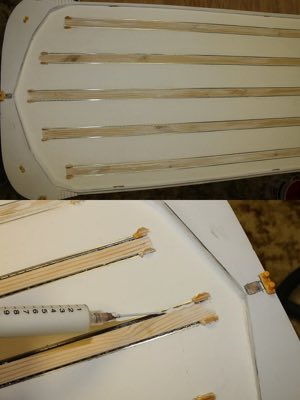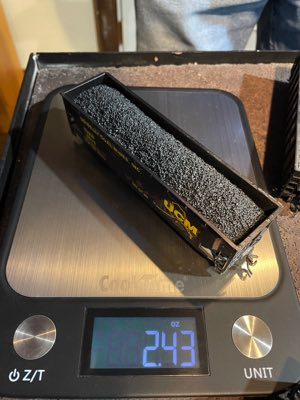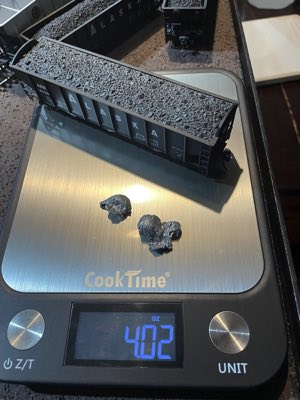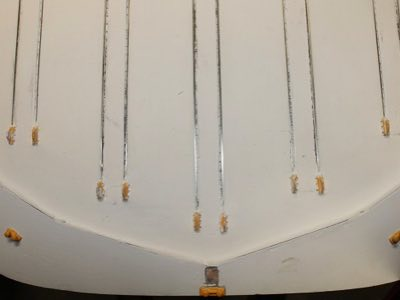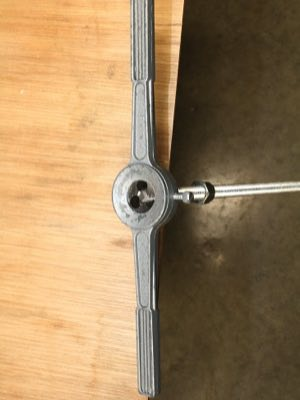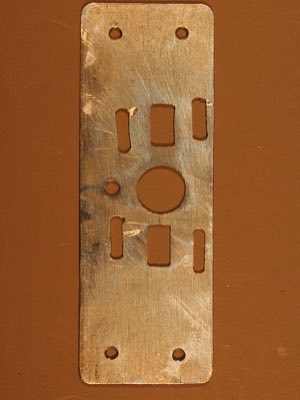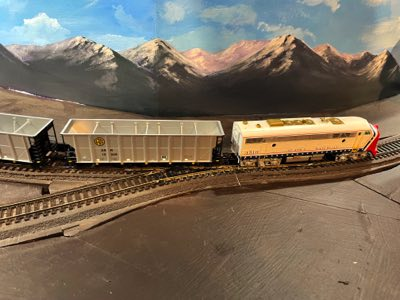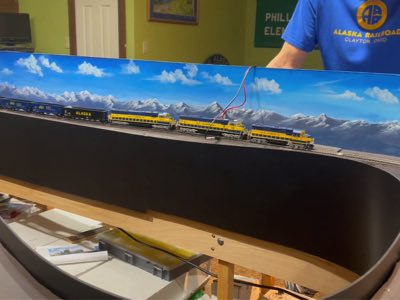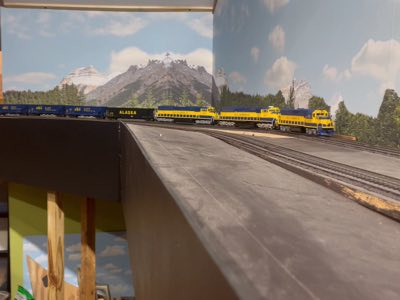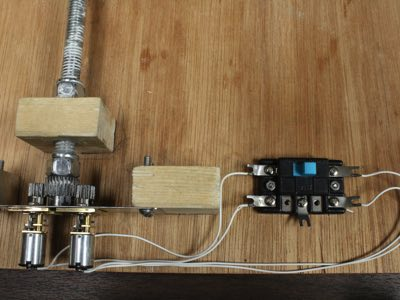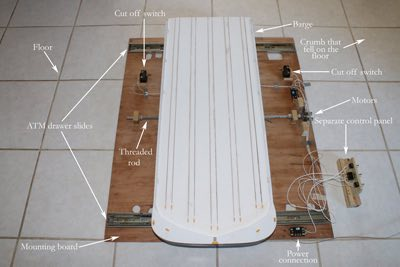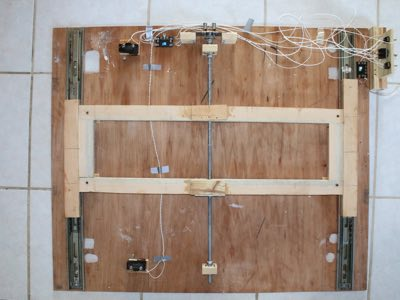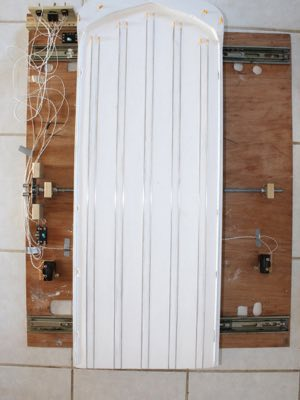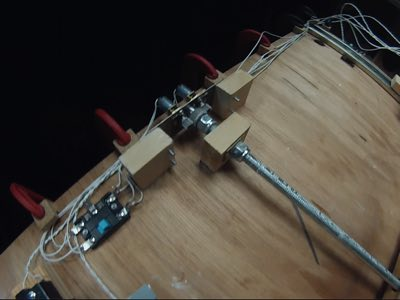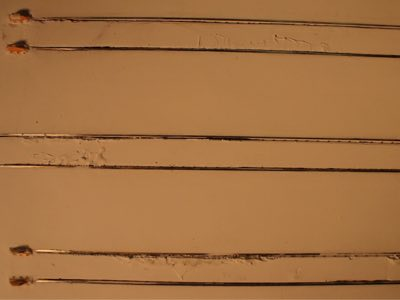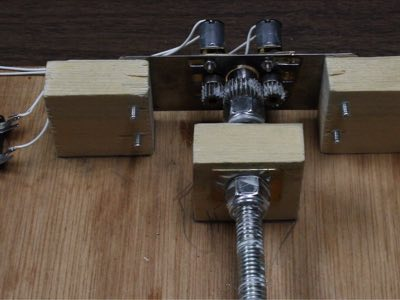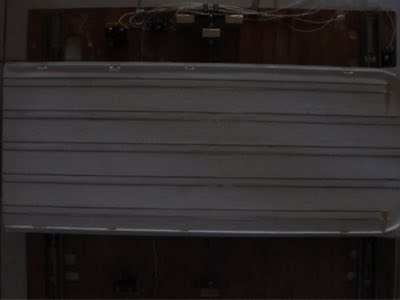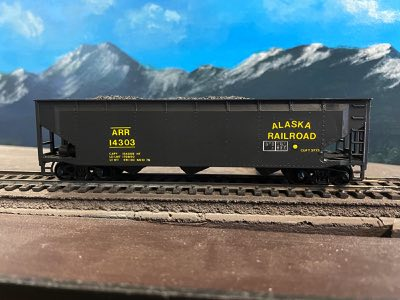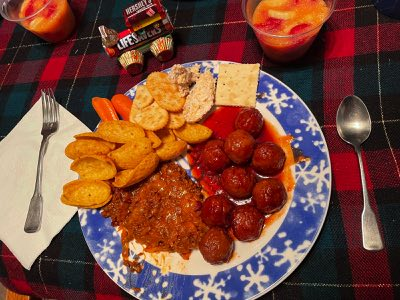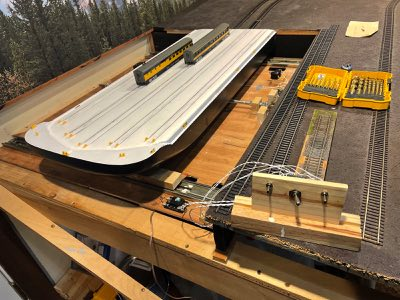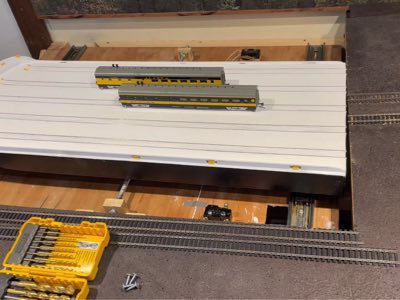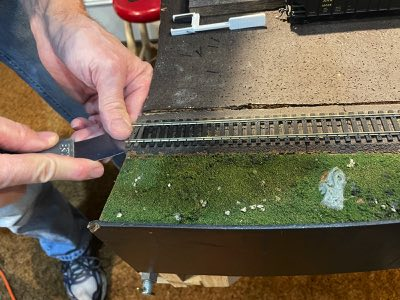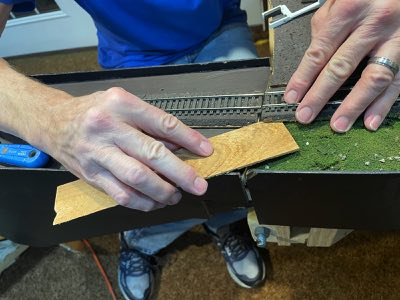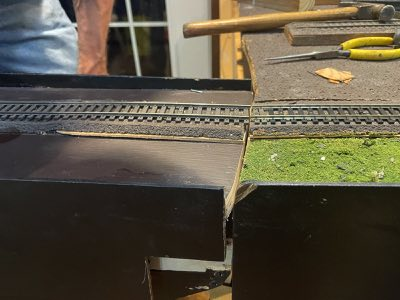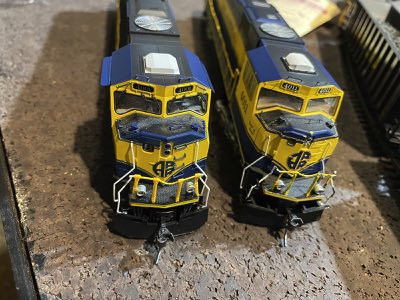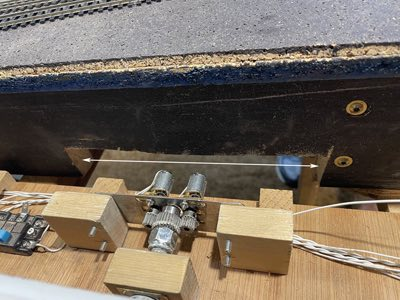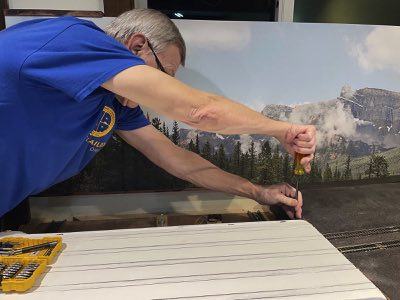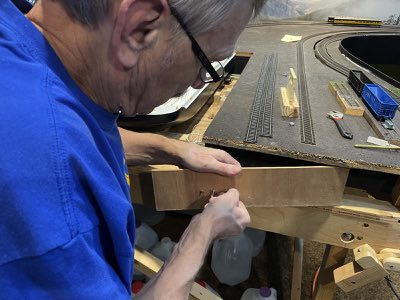| The bottom part of this photo shows drywall compound being put into the space between the rail and the center board to hide the ties. Ties are not visible on the real barge. The top part of the photo shows all five tracks completed with no ties showing. A second pass will need to be done as the drywall compound will shrink as it dries leaving some voids. The wood slats will need to be painted white. | While running hopper car trains over the past week I experienced lots of derailments. The culprit cars were underweight reminding me I needed to...add some weights. Rick brought his scales to train night and we confirmed what I suspected. Many of the hoppers were under weight In HO, a 6 inch car should weigh 4 ounces. That is a 1 ounce minimum plus 1/2 ounce per inch of car. 1 + 3 = 4 ounces. Obviously this car needs an additional 1.6 ounces. |
While cycling as a teenager I picked up wheel balance weights I found along the road. I brought them home, melted them down and removed the attaching clip. I placed aluminum foil in the bottom of my hoppers to create a mold. I removed the foil and poured in hot lead. This worked well. Many years later while tearing down the layout I put the lead weights in an old margarine container. Tonight we located the container and dumped out the weights. |
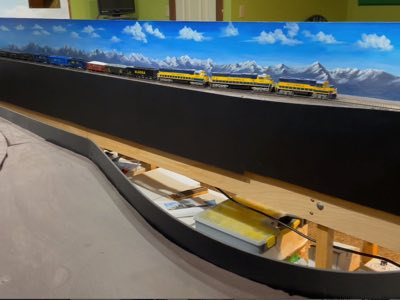 |
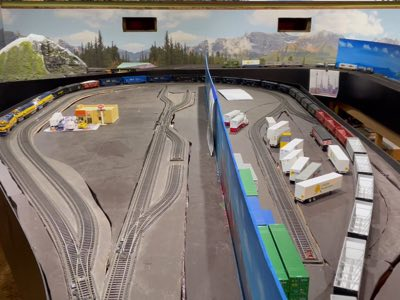 |
|
| Rick used a pair of nippers to trim off part of the weight. Through trial and error we eventually got the amount of weight needed. We then spent the rest of the evening running a 26 car hopper consist. Almost all the derailments vanished. We did have some cars come uncoupled and John will try to run this to ground over the next week. | This is a short video of the 26 car consist headed by GP38 #2001 and SD870MACs #4011 and #4014 traveling through the double track section. I am so excited to have smooth operation of this mixed hopper train. It will be a fun show piece for visitors! | This is a longer video showing the same train passing by Alaska Marine Lines, taking the long outside curve and then passing the Dairy Queen. You can find a much longer video of this train here. Just a reminder that RailPro uses true load sharing technology so each locomotive "shares the load." |
 |
||
| Last week Rick video of a two train meet near Dairy Queen. Wave to the engineer as we pass the SD70MAC pulling five coal hoppers and a caboose. |
 |
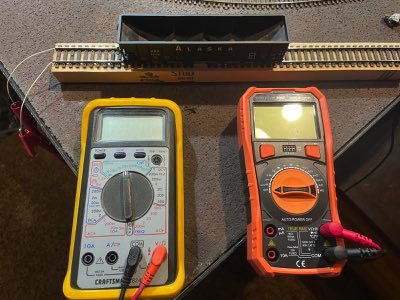 |
|
| Rick continues to work on the barge. The track, wall compound coverage and wooden mid-track slats are all in place. Final finish work should take place next week. In regards to barge movement, Rick purchased motors and gears as well as manufactured custom components. The motors will power gears which will drive a custom threaded rod. Power is provided by a repurposed AC/DC Power Supply Adapter. The above video shows the motor and secondary gear powered by the adapter. | During the week I ran a 26-car hopper train just for fun. I found it slowed down on the main next to the Anchorage yard. Rick came over and extensively checked voltage levels and continuity of this section. He also cleaned the rails. After all this Rick found nothing amiss.
|
Much of train night is now spent running trains and troubleshooting ankle biters. One SD70MAC came with couplers which barely cleared the body. Kadee long centerset shank couplers are now on order. We worked 26-hopper slow down issue and through a long process of elimination found #16005 to be the possible culprit. He put #16005 on his portable test track and found nothing wrong. For now we've bad ordered #16005. In the future we are planning a truck swap with another hopper. |
